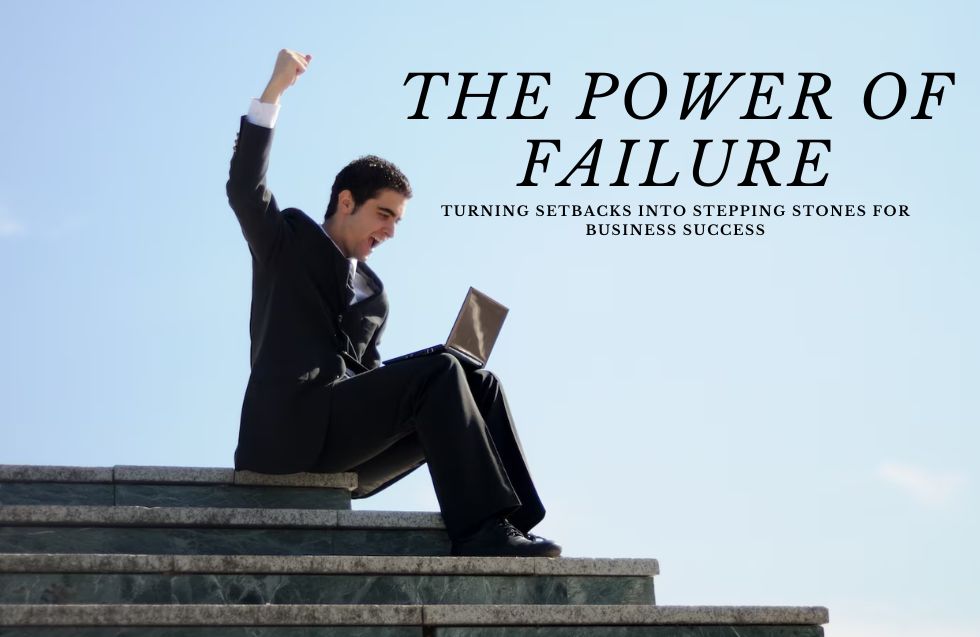Failure. It’s a word that often carries negative connotations, especially in the business world. Yet, some of the greatest successes in history have emerged from failure. As counterintuitive as it sounds, failure can be a powerful tool for growth, innovation, and long-term success in business. Whether you’re an entrepreneur navigating the startup world or a seasoned executive at the helm of a large corporation, understanding the value of failure can be the catalyst for your next big breakthrough.
1. Failure as a Learning Opportunity
The first and most essential takeaway from failures is the lessons it imparts. In business, every failures is a form of feedback. When a product doesn’t perform well in the market, or when a strategy falls flat, there’s always valuable insight to be gained. These insights can lead to better decision-making in the future, minimizing the risk of repeating the same mistakes.
For example, after several failed ventures, Elon Musk learned how to improve SpaceX and Tesla by understanding the reasons behind each setback. He used each failure as a stepping stone to build better products and improve operational efficiency. The key lesson here is: embrace failures as a critical learning opportunity.
2. Building Resilience
Failure builds resilience, a trait necessary for surviving the inevitable ups and downs of business. Entrepreneurs and business leaders who are resilient tend to bounce back from setbacks faster and stronger. By facing failures head-on, you learn how to manage uncertainty and develop the mental fortitude to continue pursuing your vision despite obstacles.
Take Richard Branson, for instance. His Virgin Cola venture failed miserably, but that didn’t stop him from pursuing other ventures like Virgin Atlantic and Virgin Galactic. Resilience enabled him to pivot and continue succeeding in other areas, knowing that one failure doesn’t define his entire business journey.
3. Innovation Through Failure
Many groundbreaking innovations have emerged from failure. When things go wrong, it forces you to think differently and come up with creative solutions. In fact, some companies make failures an integral part of their innovation process by fostering a culture where employees are encouraged to experiment and take risks, even if it means failing at times.
Consider the post-it note. It was born out of a failed attempt by 3M scientists to create a super-strong adhesive. Instead of discarding the idea as a failure, they saw its potential and rebranded it as a temporary adhesive that revolutionized office supplies. This example highlights that failure can be a gateway to unexpected innovations.
4. Enhancing Risk Management Skills
Failure makes you a better risk-taker. Once you’ve experienced failures, you develop a sharper understanding of the risks involved in your business decisions. This leads to more calculated risk-taking in the future, where you understand the potential pitfalls and can better prepare for them.
As a business leader, understanding the balance between risk and reward becomes second nature after failing a few times. The experience can enhance your ability to navigate complex business environments and avoid costly mistakes in the future.
5. Fostering a Growth Mindset
When you view failure as part of your growth, it becomes less about the failure itself and more about your ability to adapt and improve. A growth mindset encourages you to see challenges as opportunities rather than threats. This mindset is essential for business longevity because it helps you stay competitive in an ever-changing market.
The best entrepreneurs and business leaders, like Jeff Bezos or Oprah Winfrey, possess this mindset. They understand that no failure is final, and the lessons learned can propel them to even greater heights.
6. Strengthening Relationships with Your Team
Failure can also foster stronger relationships within your business. When things don’t go as planned, it’s important to share responsibility, celebrate the lessons learned, and involve the entire team in the recovery process. This collective approach to handling failure strengthens team morale and fosters a culture of collaboration.
A leader who embraces failure openly can build trust and loyalty within their team. Employees feel empowered to take risks and innovate without fear of being penalized for every misstep.
How to Leverage Failure for Success in Business
- Analyze Failures Without Bias – Once a failure occurs, take time to analyze it thoroughly. Understand what went wrong and identify specific areas where improvements can be made.
- Encourage a Culture of Experimentation – Create a work environment where your team feels comfortable experimenting and taking risks. Failure shouldn’t be feared but viewed as part of the process of innovation.
- Embrace Change – Use failure as an opportunity to pivot, change course, or rethink your strategy. Be adaptable and remain open to new ways of doing things.
- Set Realistic Expectations – Failure often stems from unrealistic expectations. When setting goals, make sure they are achievable, measurable, and based on solid research.
- Share Your Failures – Transparency can build stronger relationships with stakeholders, employees, and customers. By openly sharing your failures and the lessons learned, you position yourself as a leader who is resilient and committed to growth.
Conclusion: The Ultimate Takeaway from Failure
The best takeaway from failures in business is that it is not the end—it’s a stepping stone toward success. By embracing failure, learning from it, and allowing it to drive innovation and personal growth, you can transform setbacks into powerful catalysts for future achievements.
Successful businesses and leaders are not those who never fail, but those who learn to fail forward, using each mistake as a valuable lesson in their ongoing journey.













